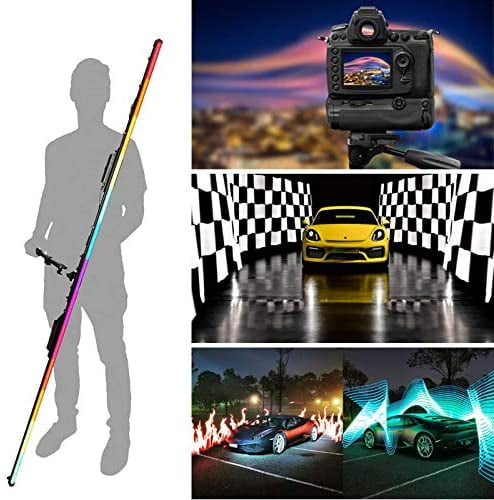
LED lighting provides a convenient and cost-efficient light source for photography and videography. If you're a videographer, this constant light is suitable for action shots. Since LEDs are continuous light, you can move around as you compose a shot, or use a remote camera control. Use colored LEDs to alter the mood in your photograph. If your design calls for only one highlight, place a light on just one side. For drama in your portrait, put a light on either side of your subject. These characteristics make LEDs useful for portrait photography. You can also use them in spaces that are too small to be safe for lights that run hot. You can place them close to a subject without causing discomfort. Single LED lights are too small to light a photo, but used as accents, they could add interest to a picture.Įnergy-efficient LEDs are cooler than traditional studio lights.
BUY PIXELSTICK FULL
You can use a small panel on a light stand to highlight a face in a portrait, while larger LED panel lights would provide soft light for a full body image. If you need convenience, some kits are built around battery LED lights. Like the tungsten light kits that are still popular in videography, LEDs come grouped with accessories in LED lighting kits. This makes them not only a cost-effective choice, but environmentally friendly as well. LEDs convert 90 percent of their energy into light. For photography and videography, choose continuous light when you need to mimic certain types of illumination sources, or you need to see the result of composition before shooting an image. LEDs can provide continuous light, as opposed to the off-and-on flashes of strobe lighting. While colored lights had been used only in things such as clocks and traffic lights, white LEDs gained widespread use in photography and video.
The original lights were red, followed by yellow, green, and blue. Although you might think of this type of light as new technology, an engineer at General Electric invented the first one in 1962. Light-emitting diodes are semiconductors that convert electricity to light. When tungsten lights or fluorescent lights don't fit the situation or the budget, consider LEDs. Their illumination is similar to natural light, and has the versatile color balance. They're inexpensive, don't put out the amount of heat that other studio lights do, and come in a variety of configurations. It will be improved with updates.LED lights can be your best choice for lighting your studio. *Tricks count - throws, drops, stalls are still beta and may be not accurate. Makes amusing illumination when the poi are untouched. Image stabilization: retains width and position of an image in the air while spinning.

Training statistics in the mobile app: the time of using props, the number of turns, throws, drops, calories spent, etc., made during the entire time working with your poi We offer two Ignis Pixel Stick 20 modifications - Basic and Smart. LEDs become twice as bright as other pixel poi models. Turn on the high-brightness mode for stage performances or when there is surrounding dimming. Moreover, it is possible to use a fully pre-programmed timeline. While you are spinning, your friend can change patterns according to the music.
BUY PIXELSTICK FOR ANDROID
This also makes your phone a remote controller for your Ignis Pixel Sticks: launch them and switch pictures at a distance right from the phone (available for Android and iOS). Upload your own pictures, texts, emoji, logos, patterns and effects - directly from Mobile App on your phone. Pixel poi casing contains 2 rows of LEDs, 20 in each, located along the entire length without dead zones. 3d printed from shockproof polyurethane makes these poi durable and convenient for manipulation, weighting only 52 grams. Ignis Pixel Stick 20 are lightweight poi in shape of glow sticks for fast and super fast twirling also known as glowstringing/glowsticking.


 0 kommentar(er)
0 kommentar(er)
